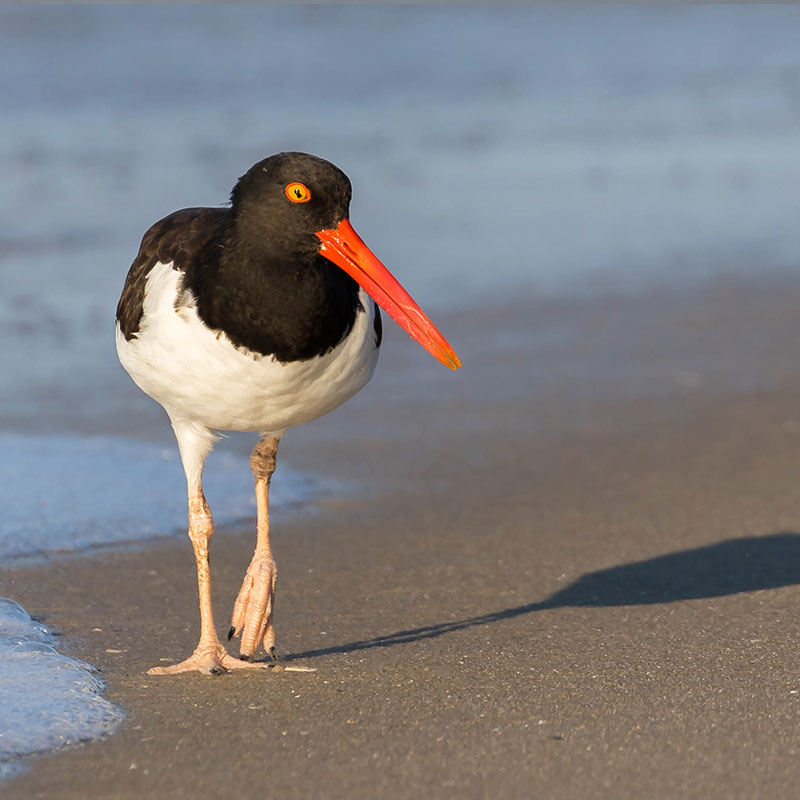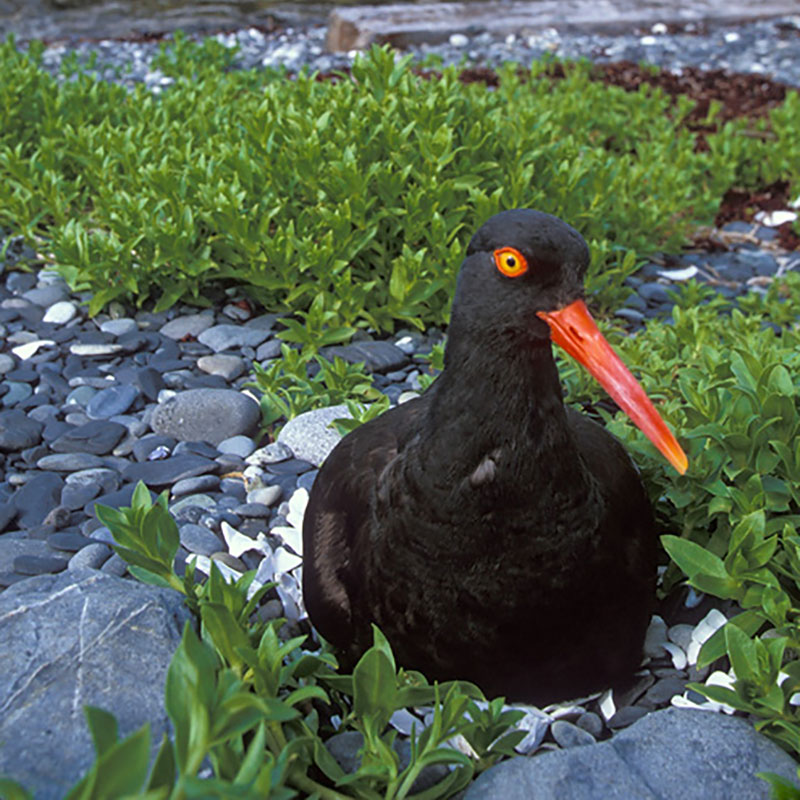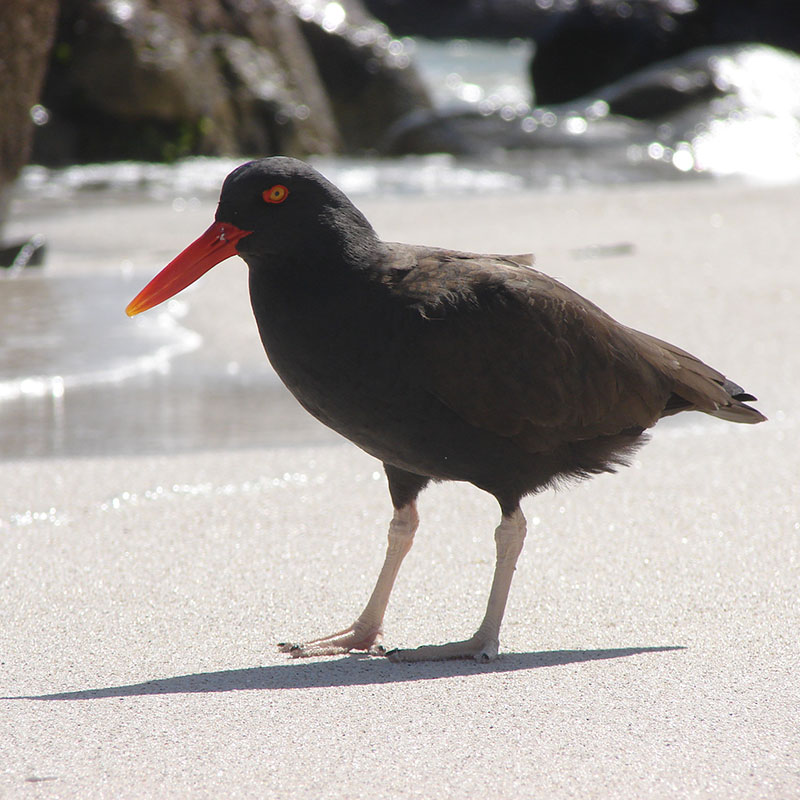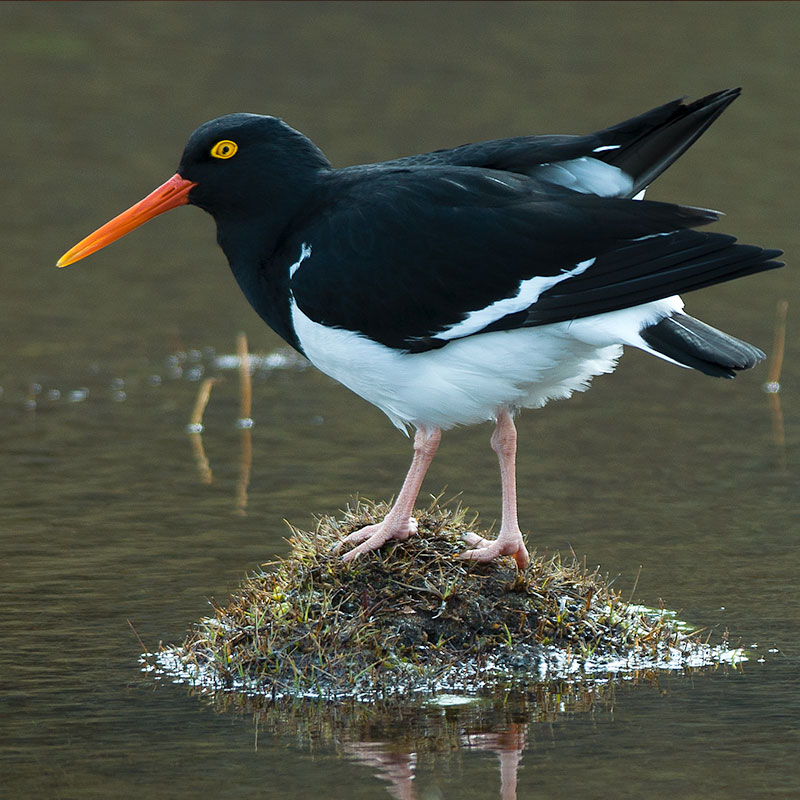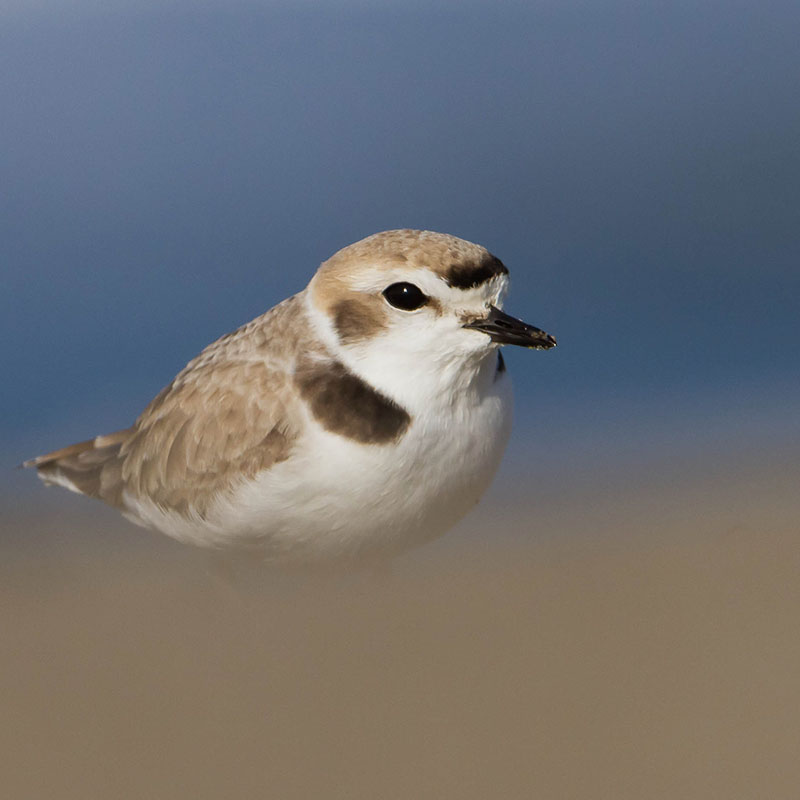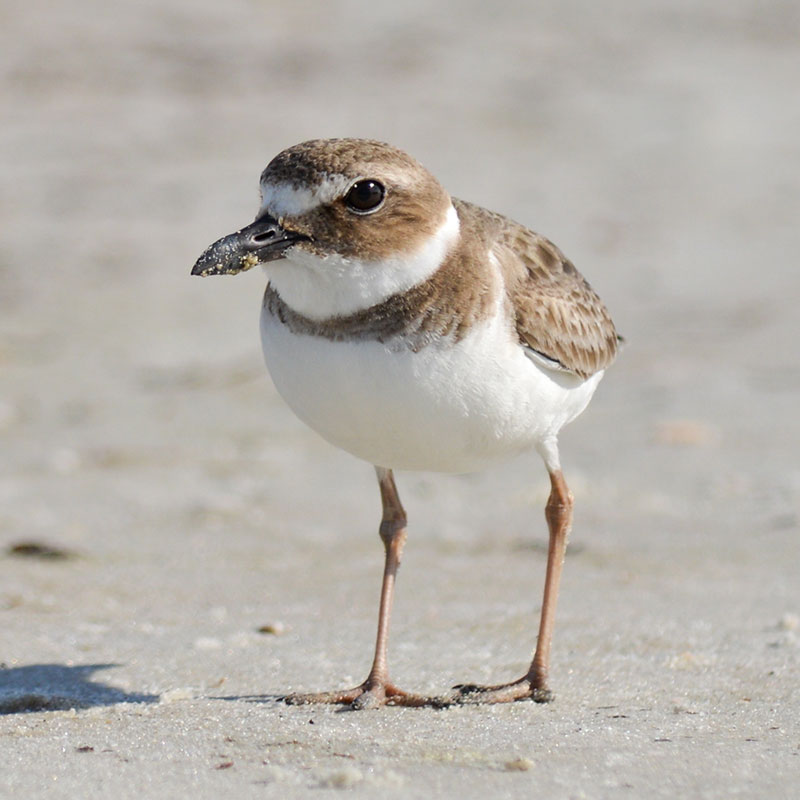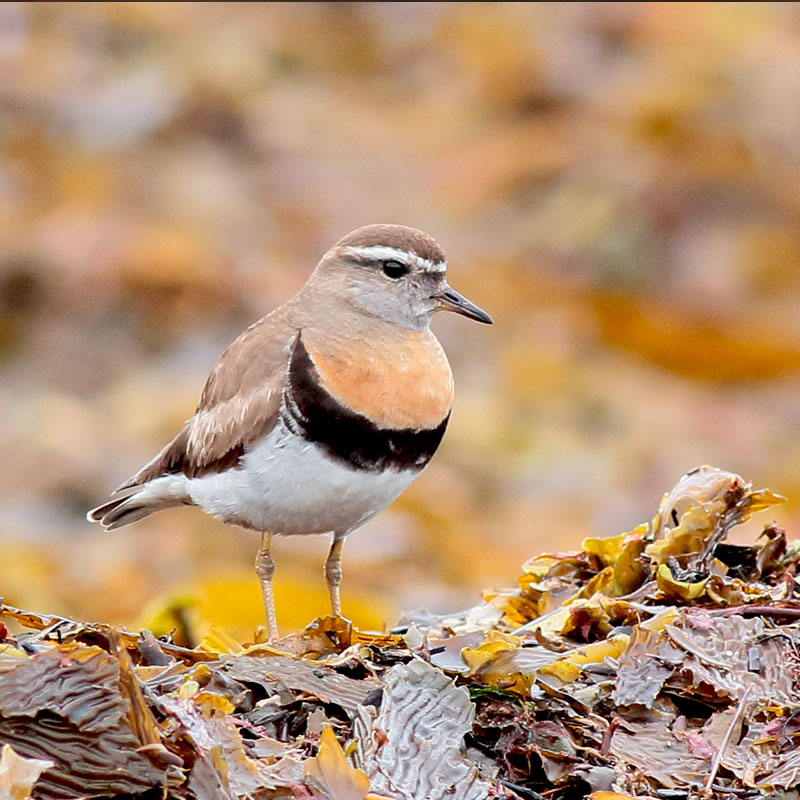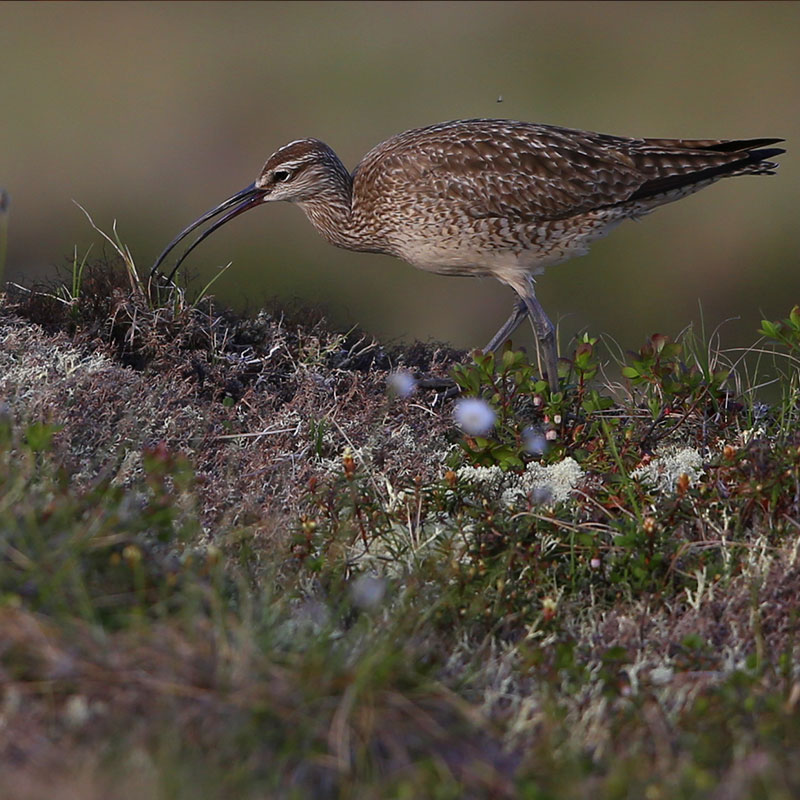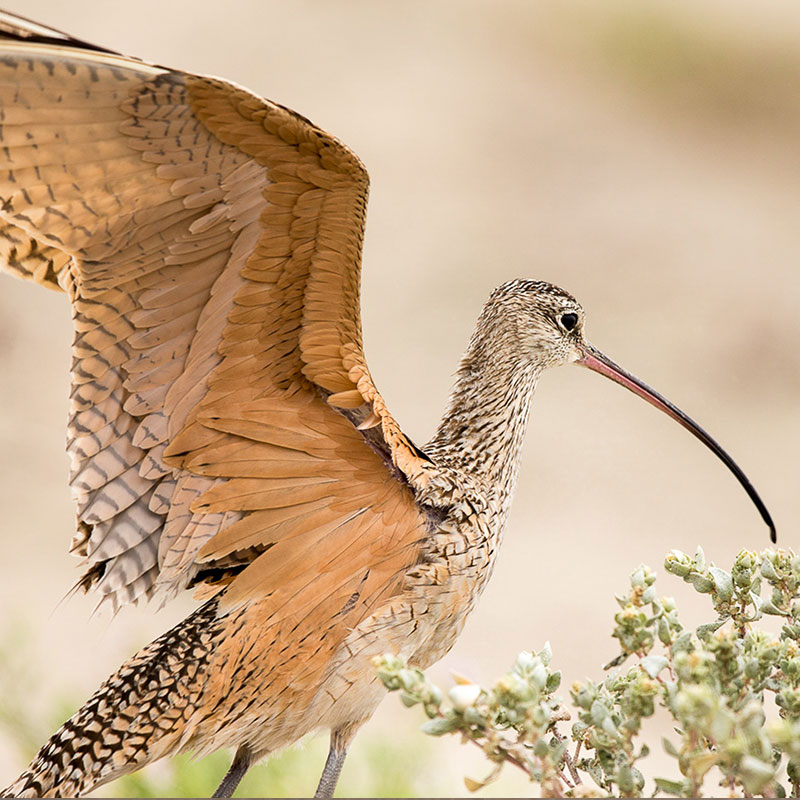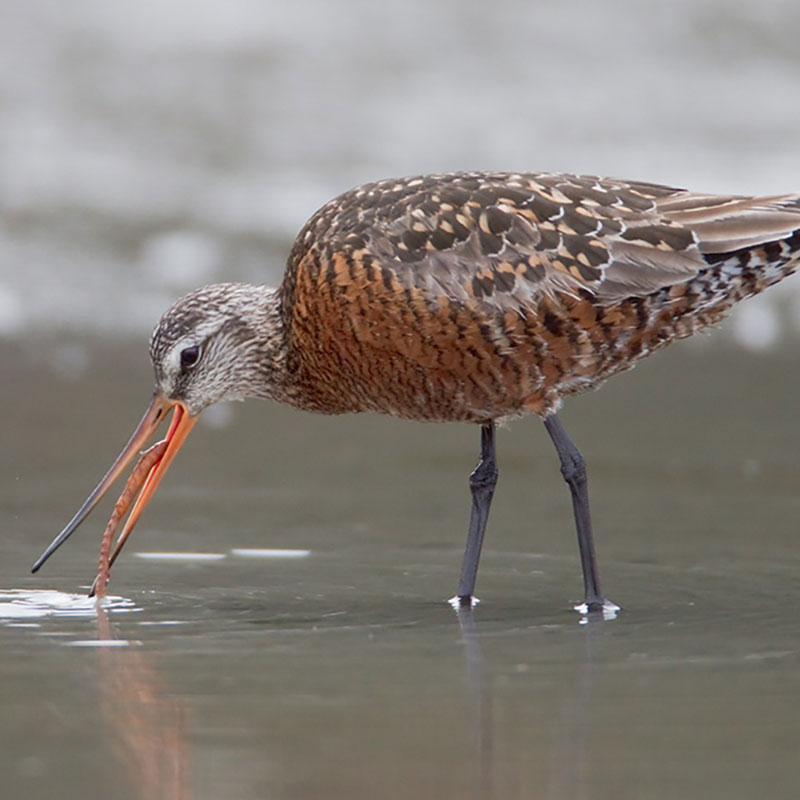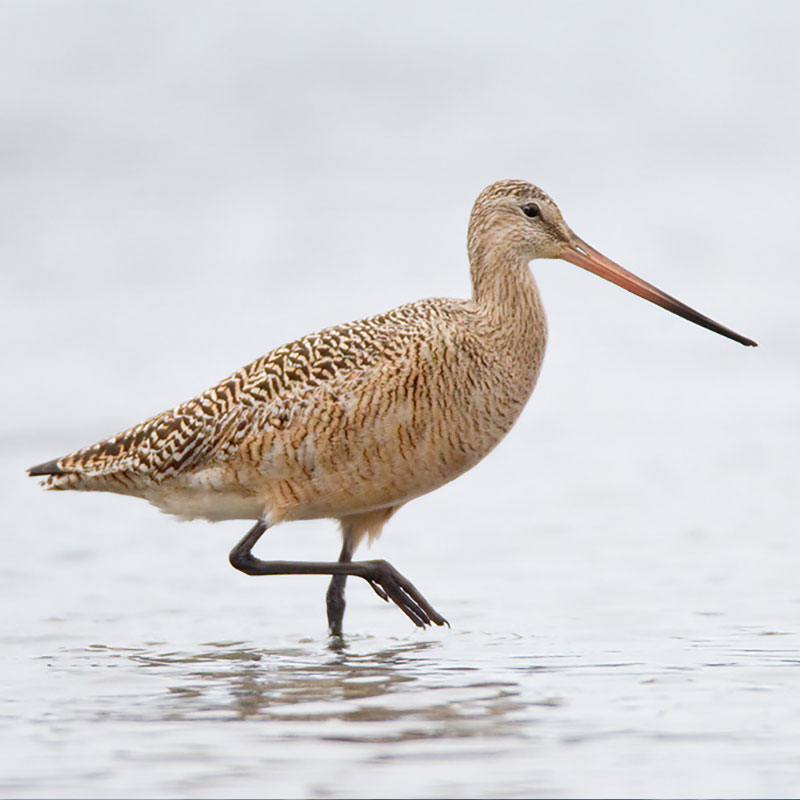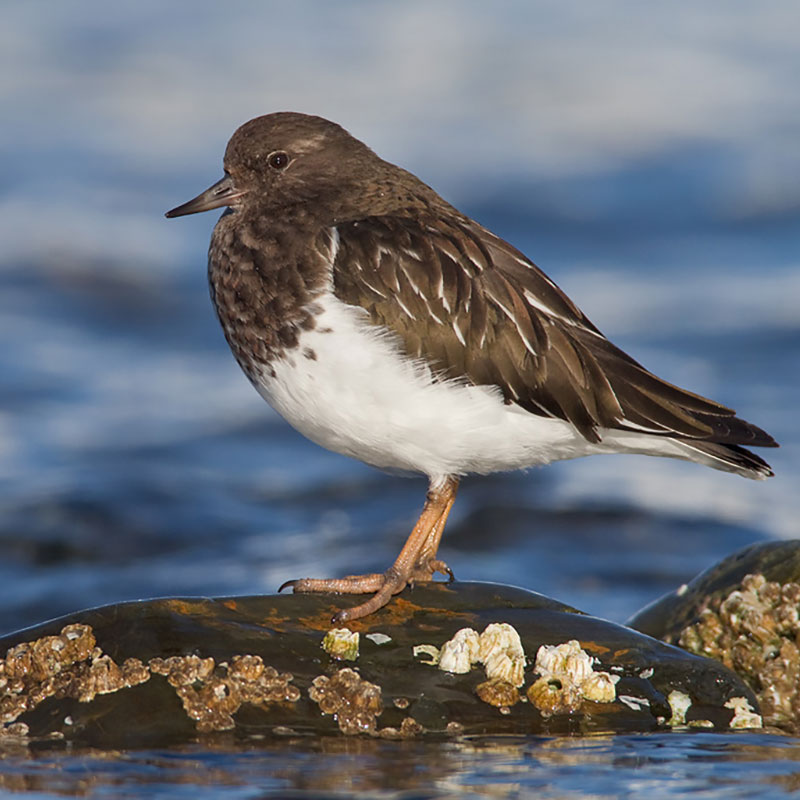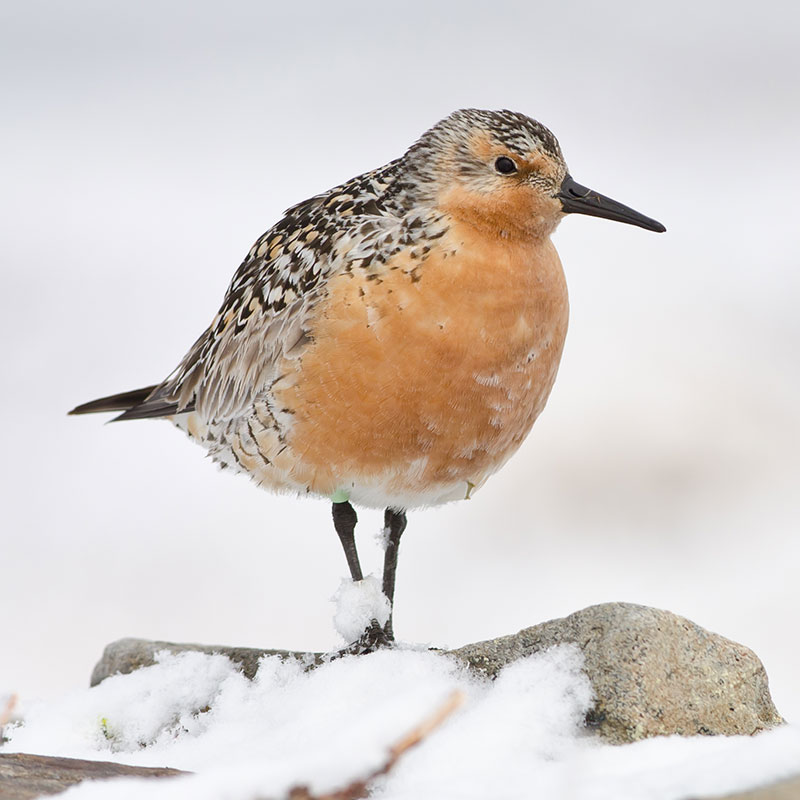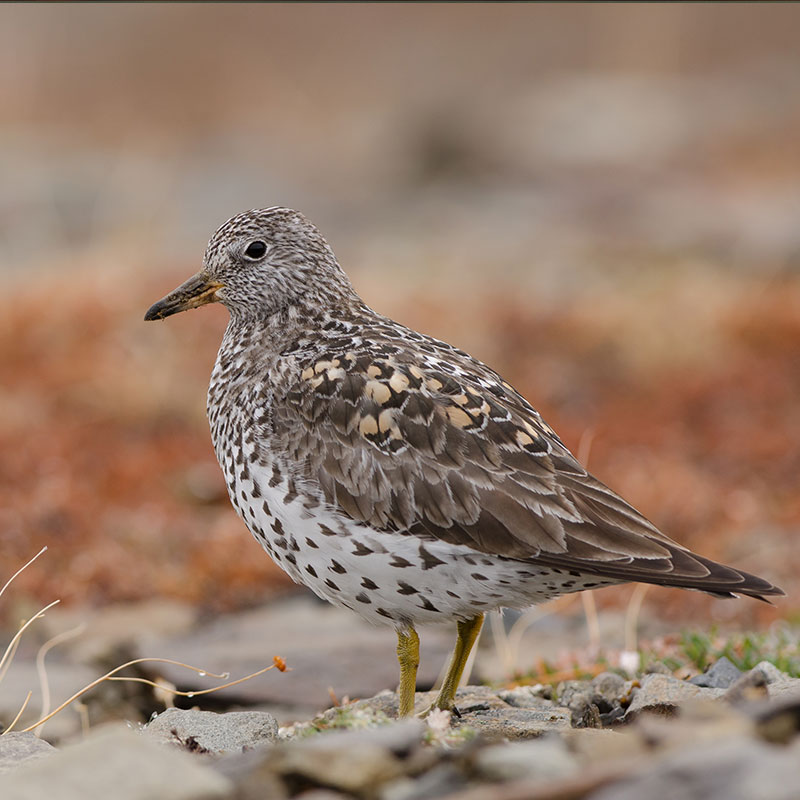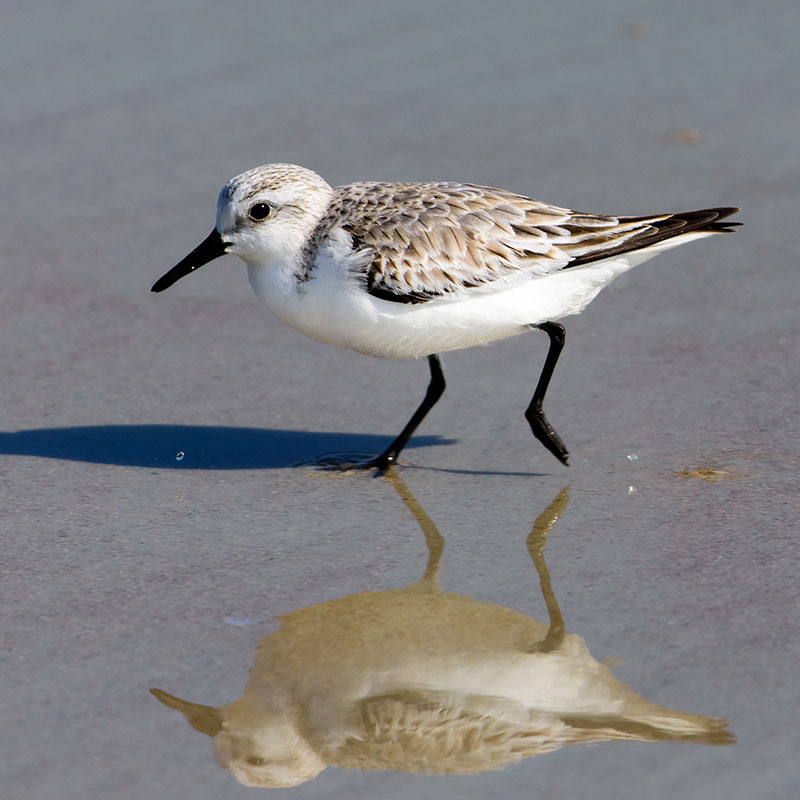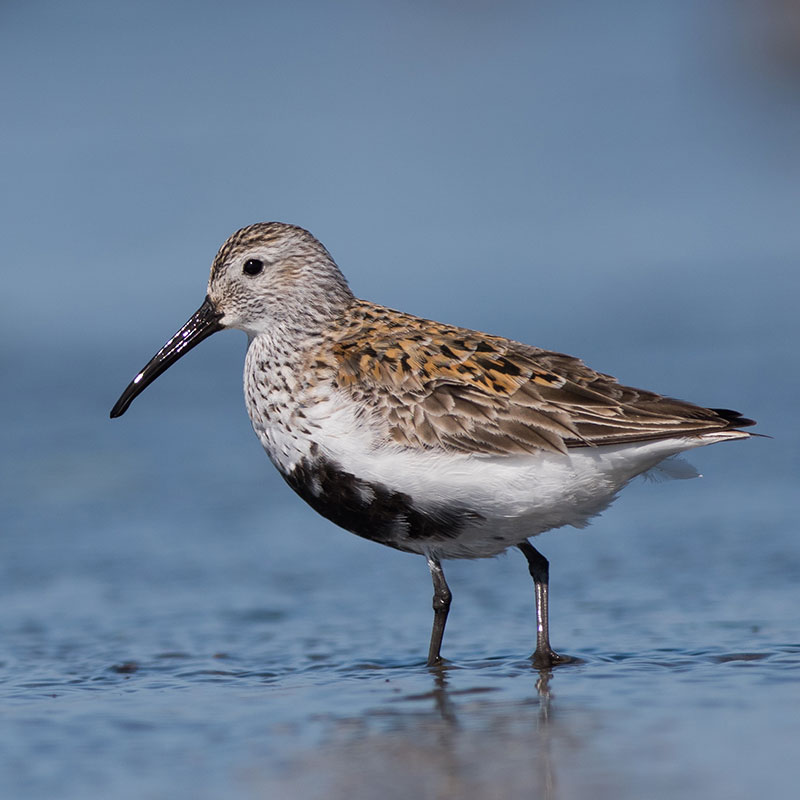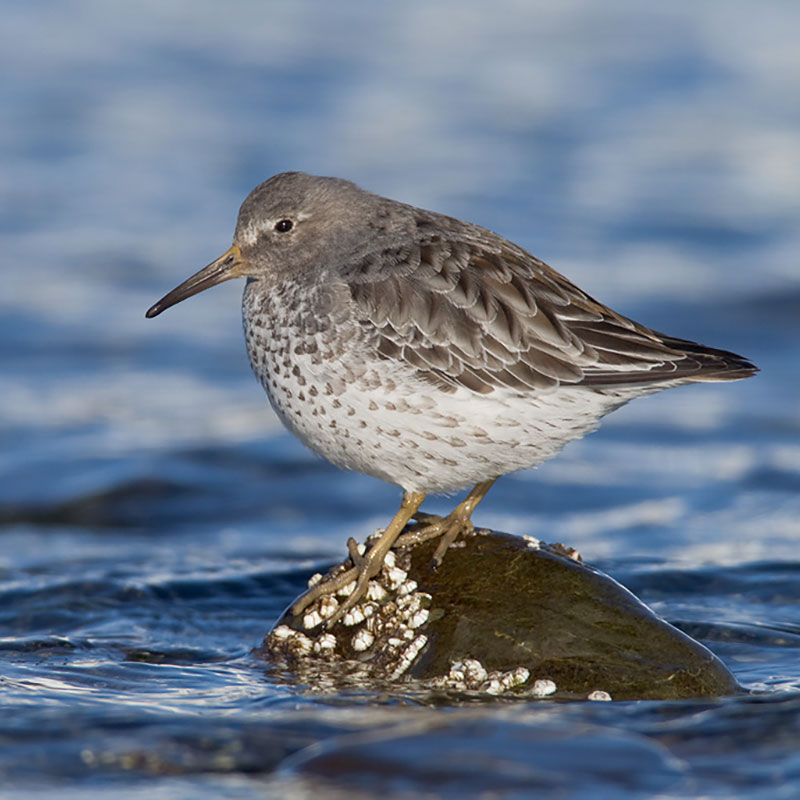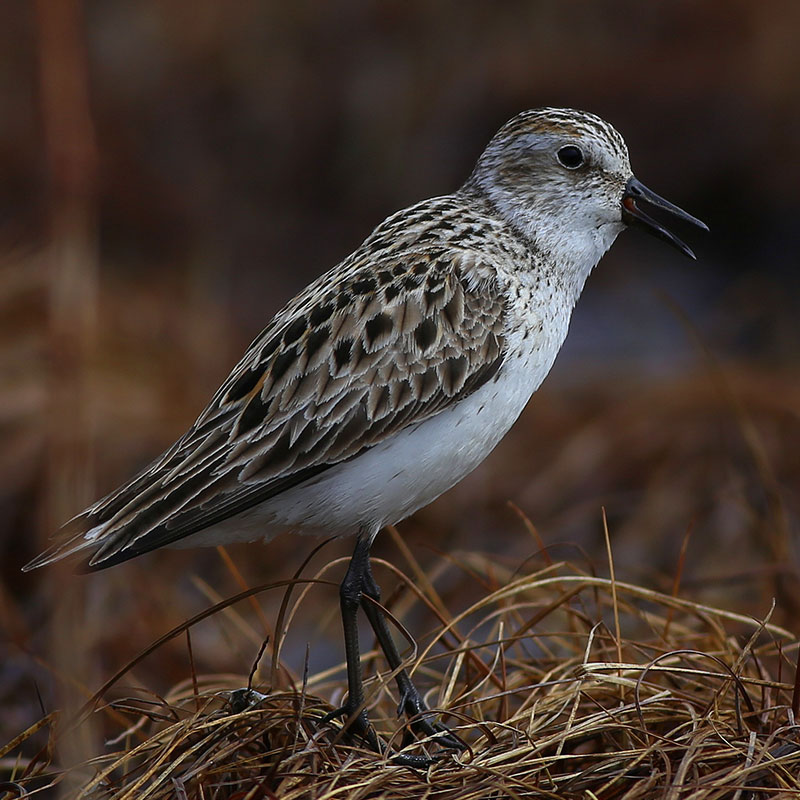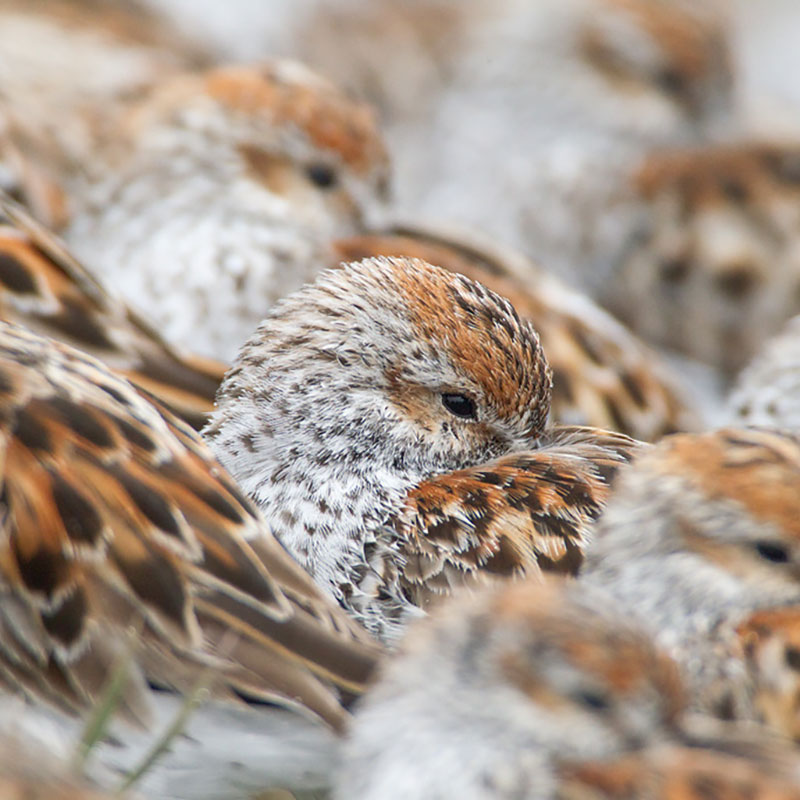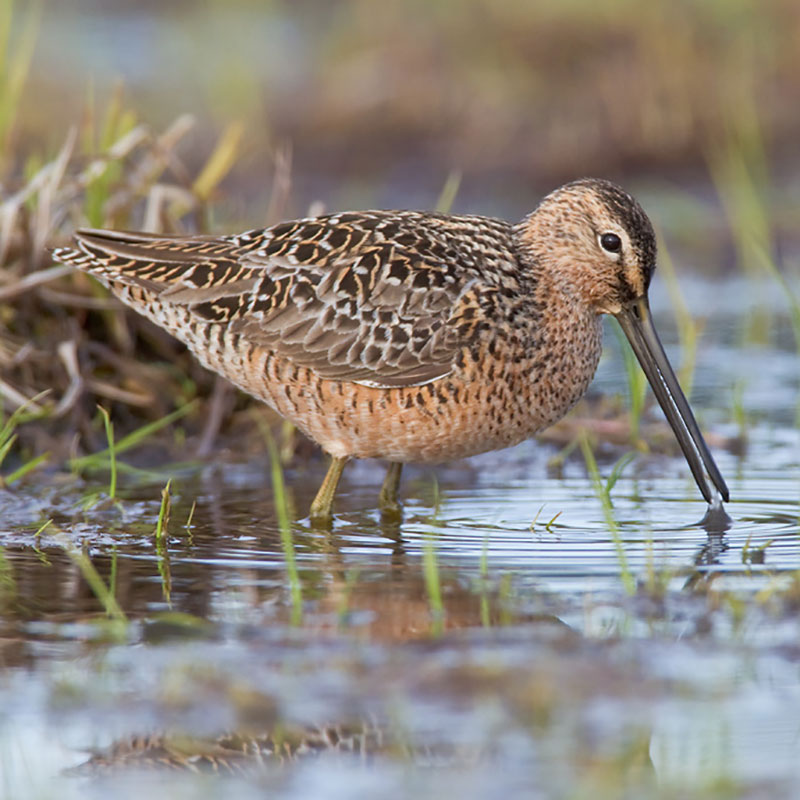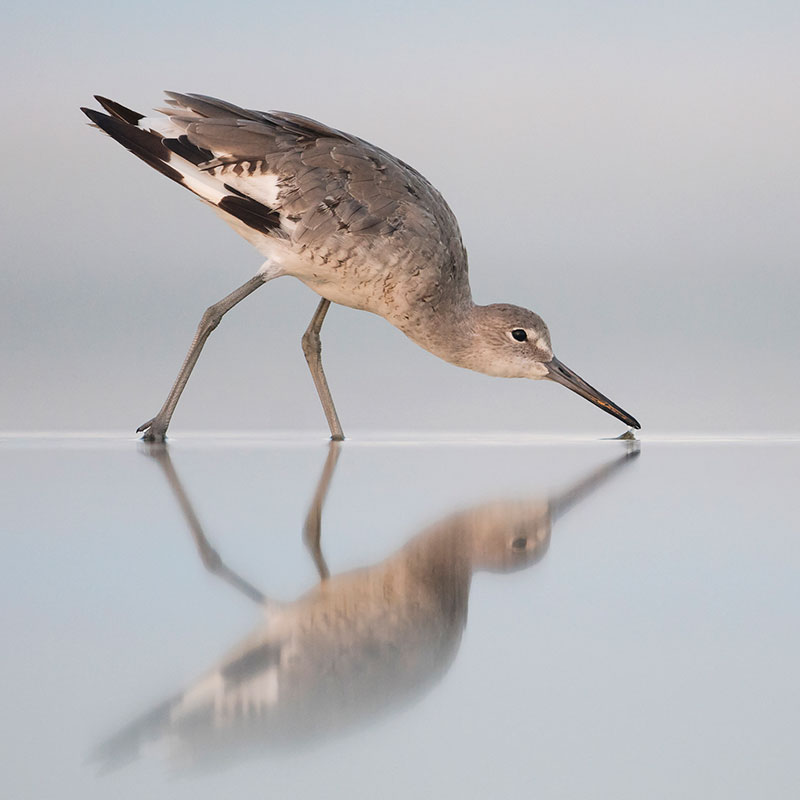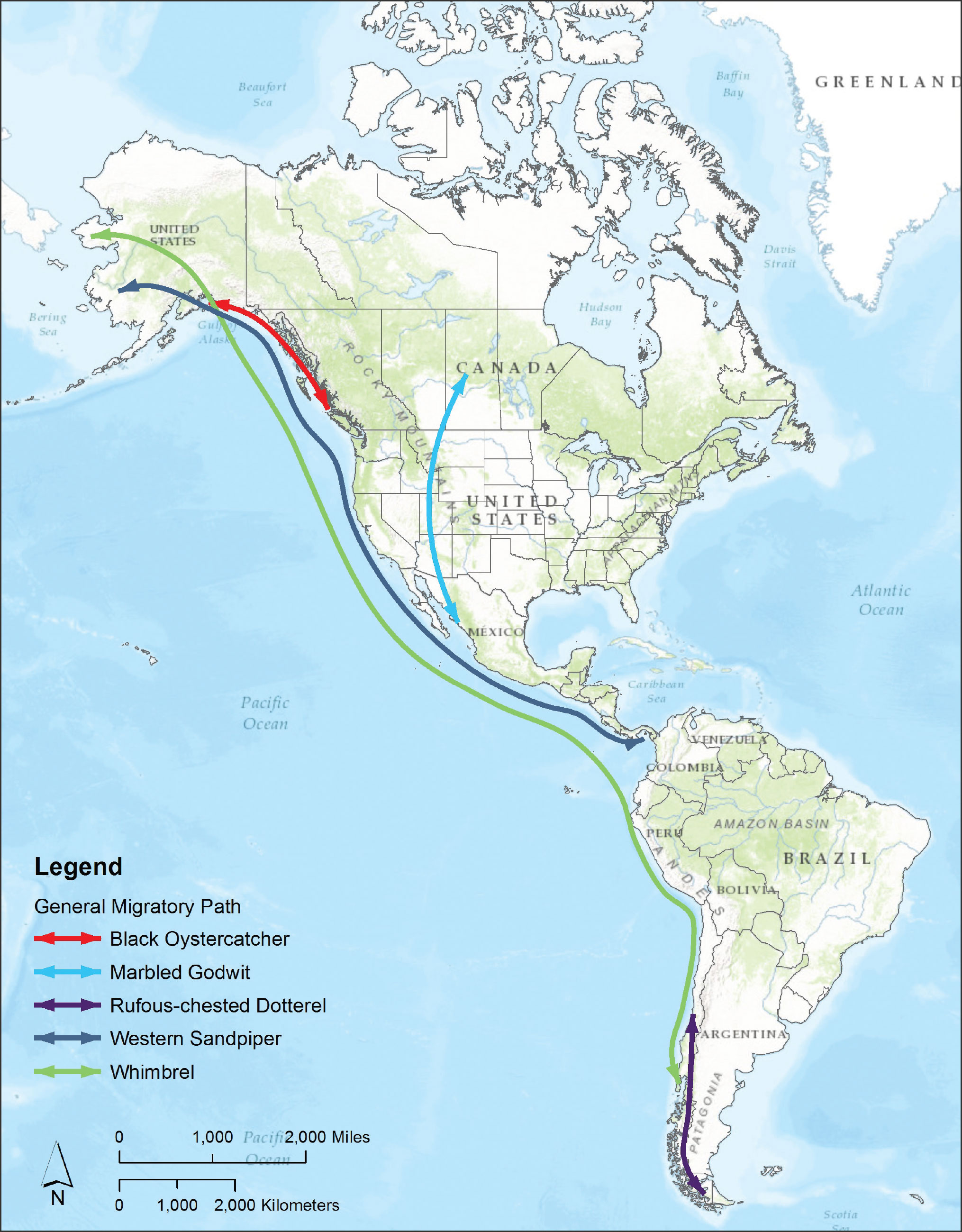What are Shorebirds?
Shorebirds, affectionately known as mudpeckers, are generally birds of open landscapes and spend most of their time on the ground, except when they are undertaking their spectacular migrations. They possess a wide variety of beaks that are used to find food by probing deep in the mud, flipping pebbles, or cracking open clams. They tend to dislike cold weather and migrate to areas where their food is not covered by layers of ice and snow. Because they are found in open country, shorebirds have developed elaborate systems of songs, aerial displays and dances to attract a mate. Many shorebird species nest near the poles and undertake extraordinary journeys to find the best seasonal food resources. These amazing creatures go by the names of stilts, avocets, oystercatchers, plovers, curlews, godwits, turnstones, sandpipers, dowitchers, snipes and phalaropes.
Focal Species
American Oystercatcher
(Haematopus palliatus)
Black Oystercatcher
(Haematopus bachmani)
Blackish Oystercatcher
(Haematopus ater)
Magellanic Oystercatcher
(Haematopus leucopodus)
Snowy Plover
(Charadrius nivosus)
Wilson’s Plover
(Charadrius wilsonia beldingi)
Rufous-chested Dotterel
(Charadrius modestus)
Whimbrel
(Numenius phaeopus)
Long-billed Curlew
(Numenius americanus)
Hudsonian Godwit
(Limosa haemastica)
Marbled Godwit
(Limosa fedoa)
Black Turnstone
(Arenaria melanocephala)
Red Knot
(Calidris canutus roselaari)
Surfbird
(Calidris virgata)
Sanderling
(Calidris alba)
Dunlin
(Calidris alpina pacifica)
Rock Sandpiper
(Calidris ptilocnemis ptilocnemis)
Semipalmated Sandpiper
(Calidris pusilla )
Western Sandpiper
(Calidris mauri)
Short-billed Dowitcher
(Limnodromus griseus caurinus)
Willet
(Tringa semipalmata inornata)
Moving Toward Action
Identify, protect, maintain, restore and enhance breeding habitats for species of highest conservation concern and at sites of high nonbreeding shorebird concentrations.
How Focal Species Use the Flyway
Shorebirds use the Pacific Americas Flyway in a number of ways . Species such as the Black Turnstone, Black Oystercatcher and Surfbird are only found on the Pacific Coast of the Americas. Some of the tropical species, such as Wilson’s and Snowy Plovers, are year-round residents along the coast, while others, such as the Black Turnstone, Magellanic Oystercatcher, and Rufous-chested Dotterel, make only short-distance migrations between their breeding and nonbreeding sites. The champions of the Flyway are the Arctic-nesting species, Surfbird and Whimbrel, for example, that can travel the entire length of the Americas to spend their nonbreeding season.
Not all species are linear in their use of the Flyway. Hudsonian Godwits nesting in Alaska cross flyways to the Atlantic coast during their post-breeding migration only to end up back on the Chilean Pacific coast for the Austral summer. Similarly, Marbled Godwits breeding around James Bay, Canada, traverse the North America continent to spend the nonbreeding period along México’s Pacific coast. The Flyway also supports nonbreeding populations of Long-billed Curlews, Willets and Marbled Godwits that breed in North America’s Great Plains and Intermountain West. Clearly, conservation of shorebirds and their habitats along the Pacific Americas Flyway impacts many countries, states and provinces.
Generalized migration paths of five focal species within the Pacific Americas Flyway project area. Map credit: Liling Lee/National Audubon Society.

